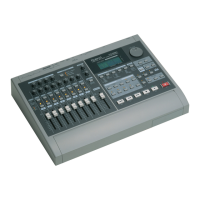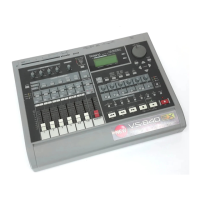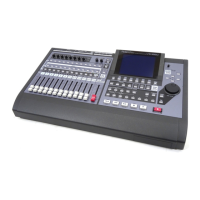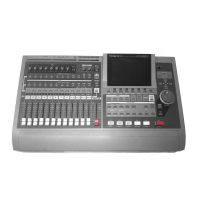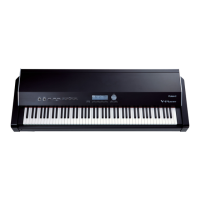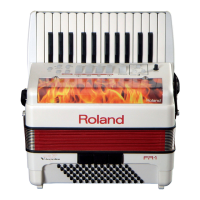133
Chapter 8: Appendix
(Continued)
If the source or track is routed POST-Fader, then the
fader will control the level to the Mix Output Bus.
Generally, tracks will be routed to the Mix Output
Bus or the Aux Bus POST-Fader. You might route a
track POST-Fader to the Mix Output and PRE-Fader
to the Effects Bus if you are adding reverb to a sound
and you want to fade out the “dry” original sound
and leave the reverb sound playing. This technique
could be used at the end of a song or possibly for a
sound effect like somebody yelling as they fall off a
cliff.
Punch In
A procedure in multi-track recording that is
essentially an overdub, but instead of recording the
new part on an adjacent track to already recorded
material, the new part is recorded by erasing a
previous part from a given track. The punch in is
initiated, while tape is playing, by entering record
mode at some precise instant, i.e., a punch in at bar
XX, or a punch in after a given word. (Punch out
refers to either stopping the recording or switching
from record back to play mode for the track or tracks
involved.)
Random Access
(See Pointer Based Editing.)
As the VS-880EX’s play structure is pointer based, it
is possible to instantly jump from one location in the
song to another. There is no “tape” or material to
move through, there are only pointers to reposition
(which happens very quickly). This is makes locating
and moving or copying material in the VS-880EX
instant.
Reverberation
Multiple, blended sound images caused by
reflections from walls, floor and ceiling. It also can be
created artificially by electronic or mechanical
devices.
RSS (Roland Sound Space)
Roland Sound Space is a 3-Dimensional processor
that allows you to move sound towards and around
the listener from playback on only two speakers. In a
mono system, sound comes from one source. The
only controls are volume and EQ. Stereo allows the
sound to be moved from left to right. Adding reverb
allows depth to be added to a mix by moving sounds
away from the listener. RSS is the next level of
processing. It allows sound to be moved towards the
listener, to the side of the listener or even above,
below and behind the listener. It is used for adding
great dimension to a mix, for special effects (a
percussion part or vocal hook) or for sound effects
for film and video.
Sample Rate
The rate at which samples are taken in the analog to
digital conversion process, usually specified in Hertz
(Hz).
Sampling
Refers to the first step in the process which converts
an analog waveform to a digital format.
Scrubbing
The VS-880EX’s Scrub mode will playback a very
short loop of audio selected from a track on the hard
drive. This is similar to the skip or cue mode on a
DAT or CD player. With this short loop of audio, you
can “scrub” across the audio using the Time/Value
dial to find where the initial attack of a sound begins,
allowing you to search for minute edit points on a
track.
The VS-880EX’s scrubbing feature makes it very easy
to find your edit points because you can always hear
them at their original pitch. The editing resolution
for finding edits on the VS-880EX is 1/3000th of a
second, allowing you to do very precise edits.
SCSI (Small Computer System
Interface)
SCSI is a protocol for high-speed recording and data
transfer between computer devices (for more
information, see page 134 of this guide).
Shielding
There are two types of shielding, electrical and
magnetic. Electrical shielding may be copper screen,
a wire braid, or any conducting material which
surrounds a circuit or cable conductors to exclude
electrostatic or radio frequency noises. Magnetic
shielding may be iron, steel, nickel, mu-metal or
other magnetic material and is used to exclude
unwanted electromagnetic fields from circuitry,
transformers or conductors.
Slapback
An echo effect where the original signal re-appears as
distinct echoes that decay in level each time they
appear. A common technique for creating slapback is
to feed the output signal from the play head back
into the record head, at a slightly lower level. If the
sound “ta” is originally fed to the recorder, the sound
“ta-ta-ta-ta-...ta” will be heard, with each “ta”
somewhat lower in level as the signal fades away.

